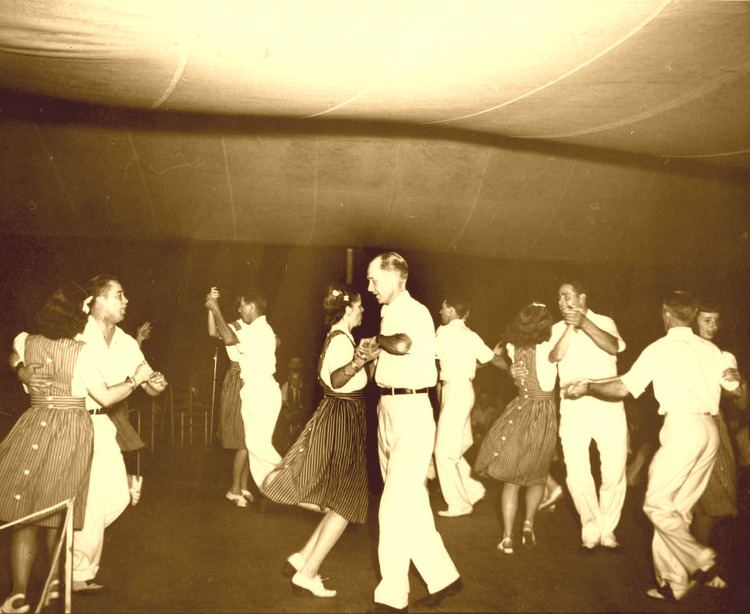 | ||
Eminem square dance lyrics hd
A square dance is a dance for four couples (eight dancers) arranged in a square, with one couple on each side, facing the middle of the square. Square dances were first documented in 17th-century England but were also quite common in France and throughout Europe. They came to North America with the European settlers and have undergone considerable development there. In some countries and regions, through preservation and repetition, square dances have attained the status of a folk dance. The Western American square dance may be the most widely known form worldwide, possibly due to its association in the 20th century with the romanticized image of the American cowboy. Square dancing is, therefore, strongly associated with the United States. Nineteen U.S. states have designated it as their official state dance.
Contents
- Eminem square dance lyrics hd
- Rockin family s square dance demonstration
- Main types
- United States and Canada
- England
- Ireland
- Scotland
- International
- Numbering of couples
- Comparing square dance calls
- Comparing square dance music
- Other comparisons
- Variations
- References
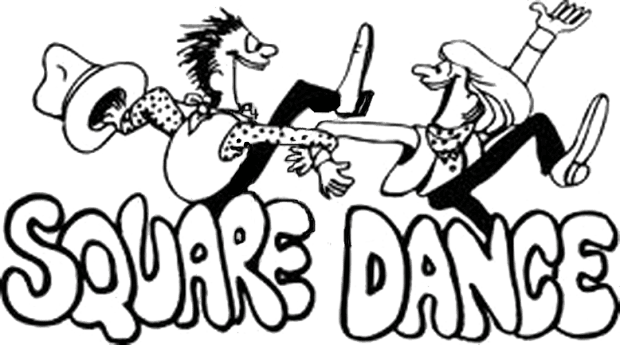
The various square dance movements are based on the steps and figures used in traditional folk dances and social dances from many countries. Some of these traditional dances include English Country Dance, Caledonians and the quadrille. Square dancing is enjoyed by people of all ages around the world, and people around the world are involved in the continuing development of this form of dance.
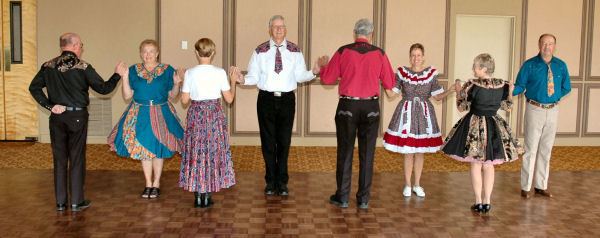
In most American forms of square dance, the dancers are prompted or cued through a sequence of steps (square dance choreography) by a caller to the beat (and, in some traditions, the phrasing) of music. In some forms of traditional square dancing, the caller may be one of the dancers or musicians, but in modern Western square dancing the caller will be on stage, giving full attention to directing the dancers. Modern Western square dances are not learnt as complete routines; the dancers learn basic movements, each with its own distinctive call, but do not know in what order they will be called.
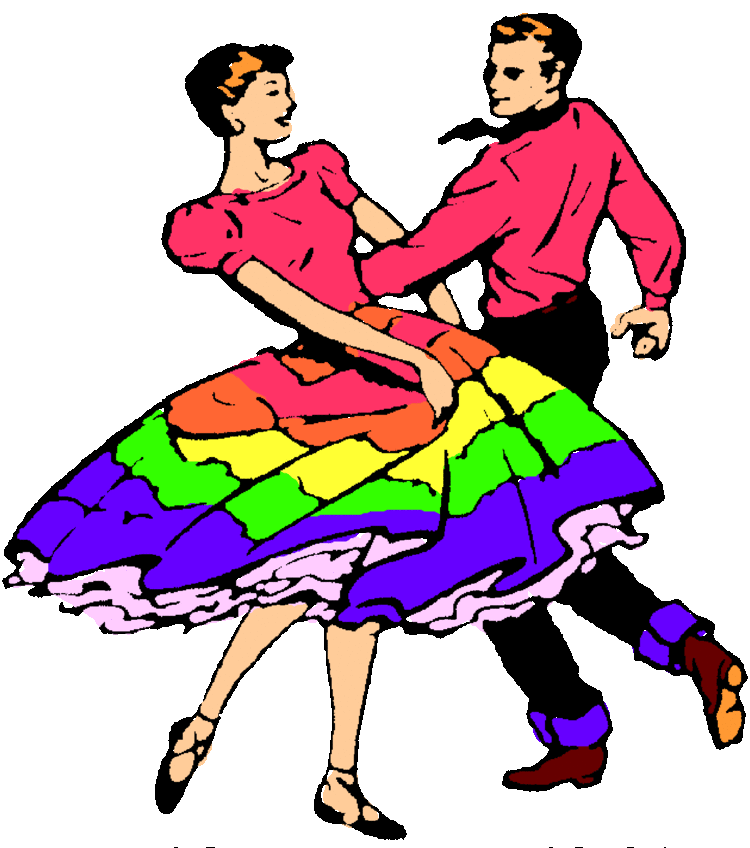
The American folk music revival in New York City in the 1950s was rooted in the resurgent interest in square dancing and folk dancing there in the 1940s, which gave musicians such as Pete Seeger popular exposure.
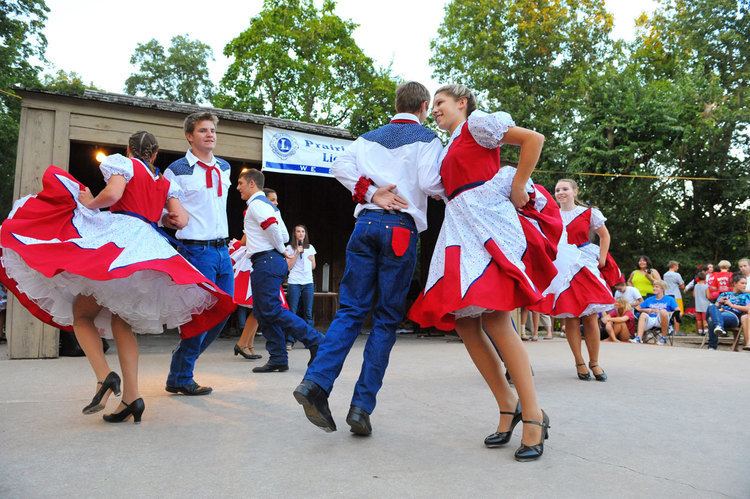
Rockin family s square dance demonstration
Main types
Terminology: In the United States, in general, people go to square dances and call it square dancing. In England, Ireland and Scotland, people go to all sorts of dances at which some of the dances will be square dances, but they don't say that they are "square dancing". The majority of dances at such events will be in the form of longways sets, sets of four (two couples with the men diagonally opposite each other, like the side couples in a square), three-couple or four-couple sets or circassian circles.
Conversely, people not familiar with the various different forms of dance may ask for an evening of square dance meaning simply a barn dance where many different formations of dance are used. It is possible to go to one of these "square dances" and not do a single actual square dance all evening.
United States and Canada
England
Square Dance: In Britain Square Dancing is formally organised by clubs affiliated to the British Association of American Square Dance Clubs, who also organise the teaching of Modern Western square dance to Callerlab definitions. Unless otherwise stated, a square dance is run according to the Callerlab syllabus by a caller who is either a member of Callerlab or of the Square Dance Caller's Club of Great Britain. The level of dancing is indicated on the publicity material, e.g. 'Mainstream' or 'Mainstream with Pre-Announced Plus'. This is fully described in the main Modern Western square dance entry. It is increasingly common to see Céilidh and Barn dance events advertised as being a Square Dance which can be misleading.
Ireland
Scotland
International
Modern Western square dance is practiced in many countries throughout the world.
Numbering of couples
Couple numbering in a square dance set usually begins with the couple nearest the head of the hall (the side of the room containing the musicians and caller, or in the pre-caller era, the royal presence or other hosts or important guests). This couple is the "first" or "number one" couple.
If most of the figures are danced between facing couples across the set, as in the 19th century quadrille and dances derived from it, the couple opposite the first is the "second couple". The first and second couples constitute the "head" or "top" couples (or the "head and foot" couples); the third and fourth couples are the "side" couples. In the 19th century quadrille, the third couple is to the first couple's right. In Irish set dances, the third couple (sometimes termed the "first side couple") is to the left of the "first top couple" (the couples facing the first top and first side are the "second top couple" and the "second side couple" respectively).
If most figures are danced around the set, with one or more couples visiting the others in turn, the couples are likewise numbered around the set. In 17th century England they were numbered clockwise, with the second couple to the first couple's left. In most present-day American square dance traditions, the couples are numbered counterclockwise: the second couple is to the first couple's right, the third couple is across from the first, and the fourth couple is to the left of the first. The first and third are "head couples" or "heads" (or, in older parlance, the "first four"); the second and fourth are "side couples" or "sides" (formerly "side four" or "second four").
Comparing square dance calls
In this context a "call" refers to the name of a specific dance movement. It may alternatively refer to the phrase used by a caller to cue the dancers so they dance the specified movement, or to the dance movement itself. It mirrors the ambiguity of the word "dance", which may mean a dance event, the dancing of an individual to the playing of one piece of music, or dancing in general.
In many communities, especially in Scotland and Ireland, the dancers are expected to know the dance and there is no caller.
A square dance call may take a very short time or a very long time to execute. Most calls require between 4 and 32 "counts" (where a count is roughly one step). In traditional square dancing the timing of a call is dictated by tradition; in some regional styles, particularly that of New England, the dance movements are closely fitted to the phrases of the music. In modern Western square dancing many calls have been given formally specified durations, based partly on direct observation of how long it takes an average dancer to execute them.
Traditional and modern Western square dancing have a number of calls in common, but there are usually small differences in the way they are performed. For example, the "Allemande Left" is traditionally performed by grasping left hands with the other dancer, pulling away from each other slightly, and walking halfway around a central axis then stepping through. In modern Western dance the grip is modified so that each dancer grips the forearm of the other, and there is no pulling (that is, each dancer supports his or her own weight). These modifications make it easier to enter and exit the movement, and thus easier to incorporate it into a long sequence of calls.
Traditional square dance uses a comparatively small number of calls—between about ten and thirty, depending on the region and the individual caller. (Many traditional square dance calls are similar or identical to contra dance calls, which are described at Contra dance choreography). New dance moves are explained by the caller.
In Modern Western square dance the participants are expected to have learned and become proficient in a particular program, a defined set of calls. Dancing Modern Western square dance is constantly challenging and surprising due to the unknown or unexpected choreography of the caller (that is, the way the caller ties together the "calls" and the formations which result)—unlike traditional square dance, very rarely are two modern Western dances ever alike. Like traditional square dancing, recovering from occasional mistakes is often part of the fun. Dancers are encouraged to dance only those programs at which they are reasonably proficient, the default level of achievement being the Mainstream program. All programs are set by Callerlab, the callers' international association, which also governs the training of callers.
Comparing square dance music
Irish and Scottish dances are normally done to traditional tunes. English dances may be done to traditional tunes, though, especially at ceilidhs, there is experimentation with many different musical styles.
The two types of American square dance are accompanied by different types of music.
Traditional square dance is almost always danced to live music. Since the 19th century, much of the square dance repertoire has been derived from jigs and reels from Scotland and Ireland, sometimes in relatively unaltered form, sometimes as played in the old time music tradition or as adapted by other cultures such as that of Quebec. This sort of music is played on acoustic instruments, such as the fiddle, banjo, guitar and double bass; certain instruments, including the piano, accordion, concertina and hammered dulcimer, are popular in specific regions. In some communities where square dancing has survived, the prevailing form of music has become popular songs from the 1930s, 1940s and 1950s, played on instruments such as saxophones, drums, and electric guitars. Tempos can vary from around 108 to more than 150 bpm, depending on the regional style.
Modern Western square dance is danced to a variety of music types, everything from pop to traditional country to Broadway musical to contemporary country music—even rock, Motown, techno and hip-hop. The music is usually played from recordings; the tempo is also more uniform than in traditional dancing, as the "perfect" modern Western square dance tempo is 120–128 bpm. At this speed dancers take one step per beat of the music.
Other comparisons
Modern Western square dance is organized by square dance clubs. The clubs offer classes, social and dance evenings, as well as arrange for larger dances which are usually open to the general square dancing public (i.e. non-club members). Larger dances sometimes request a strict western-style dress code, which originated in the late '50s and early '60s and is known as "traditional square dance attire", although it was not traditional before that time. Clubs may choose to advertise their dances as requiring less strict dress codes known as "proper" or "casual" (no dress code). Modern Western square dance events in Britain are increasingly seen as having a relaxed dress code, although many dancers do like to wear "traditional square dance attire".
In the United States dance groups often have no particular dress code and lines between the forms of square dancing have become blurred in recent years. Traditional-revival groups typically adopt very casual dress and traditional-revival choreographers have begun to use basic movements that were invented for Modern Western square dance forms and a few modern Western callers incorporate older dances from various traditions, such as New England or Appalachian, into their programs.
Where traditional square dancing exists as a community social dance (sometimes in the form of a Barn dance or a Ceilidh) people often dress up a bit, though their clothing is not square-dance-specific.
Variations
While the standard formation for a square dance is four couples in a square, there are many variations on the theme. Here are some examples:
Modern choreography also includes dances which morph from one form to another. There are contra dances and four couple longways sets which turn into a square dance part of the way through the dance and then back to the original formation.
Grid Squares are dances where the squares are arranged in a grid, sets carefully aligned across the room and up and down the room. The calls move dancers from one square to another in intricate patterns.
